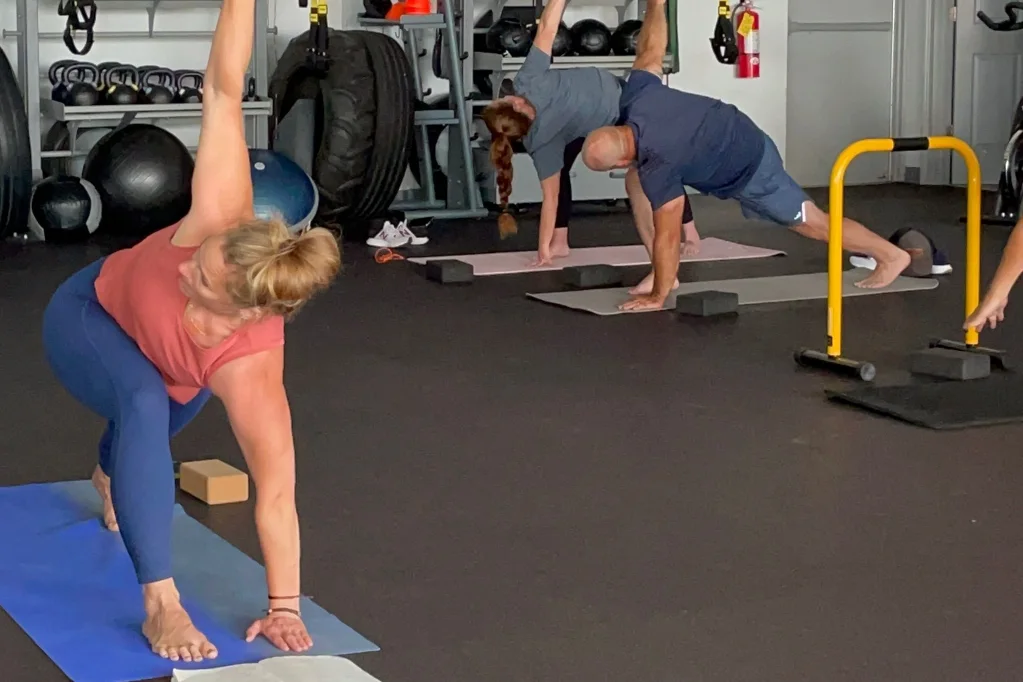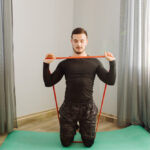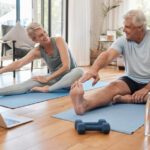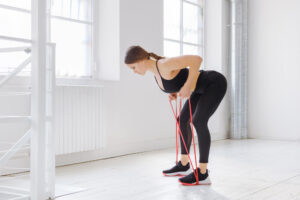It’s common for beginners and even seasoned yogis to experience muscle soreness after sessions, which often leads to the question: Is it normal to feel this way after yoga? Understanding the nature of this soreness can help practitioners of all levels adjust their practice and expectations, ensuring a safe and rewarding yoga journey.
What causes muscle soreness?
Muscle soreness after yoga, or any form of exercise, typically stems from exertion that goes beyond what your body is accustomed to.
During yoga, you engage a complex network of muscles, some of which you may not commonly use in daily activities. The strain and micro-tears in the muscle fibers incurred during these exercises are normal and are part of an adaptive process that strengthens muscles.
However, it’s the healing of these micro-tears that leads to muscle stiffness and soreness, a phenomenon known as Delayed Onset Muscle Soreness (DOMS). DOMS usually sets in a day or two after a workout and can last up to 72 hours.
Types of Soreness After Yoga
- Delayed Onset Muscle Soreness (DOMS): This is the most common type of muscle soreness encountered by yoga practitioners. It begins typically a day after the session, peaks around 48 hours, and then gradually subsides. It’s a healthy and expected response indicating that your muscles are adapting and strengthening.
- Immediate muscle fatigue: This type of soreness is felt during or immediately after the yoga session. It occurs when muscles are depleted of their energy reserves and accumulate lactic acid, leading to a burning sensation. This soreness usually dissipates within a few hours and is less about damage and more about temporary exhaustion.
Factors Contributing to Soreness
Several factors can influence how much soreness you experience after yoga:
- Yoga styles and soreness:
- High-intensity yoga: Practices like Ashtanga, Power Yoga, or Vinyasa can be particularly challenging, involving continuous movements that significantly strain various muscle groups.
- Restorative yoga: This style involves less movement and more focus on relaxation and stretching. Soreness from these sessions is usually minimal but can occur if you are stretching far beyond your usual capacity.
- Personal factors:
- Fitness level: Individuals new to yoga or those who do not regularly engage in other forms of physical activity may experience more pronounced soreness as their bodies adapt to new demands.
- Age and flexibility: Younger individuals with more flexible bodies might experience less soreness compared to older adults or those with restricted mobility.
- Previous injuries and health conditions: Existing injuries or specific health conditions can affect how your body responds to yoga, potentially increasing soreness or leading to discomfort if not practiced with proper care and moderation.
- Fitness level: Individuals new to yoga or those who do not regularly engage in other forms of physical activity may experience more pronounced soreness as their bodies adapt to new demands.
If you want to start practicing yoga in a safe environment and you’re located in Brunswick, get a 3-day free pass at HiTone Fitness to see how our beginner-friendly classes can help you see results faster.
And if you don’t know if yoga checks all your fitness boxes, read this article that answers the question “is yoga is enough for fitness“.
Final thoughts
Embracing yoga as part of your lifestyle can be transformative, offering benefits that extend well beyond the physical. While muscle soreness can sometimes be a companion on this journey, it’s important to recognize it as a normal, albeit temporary, part of the process.







